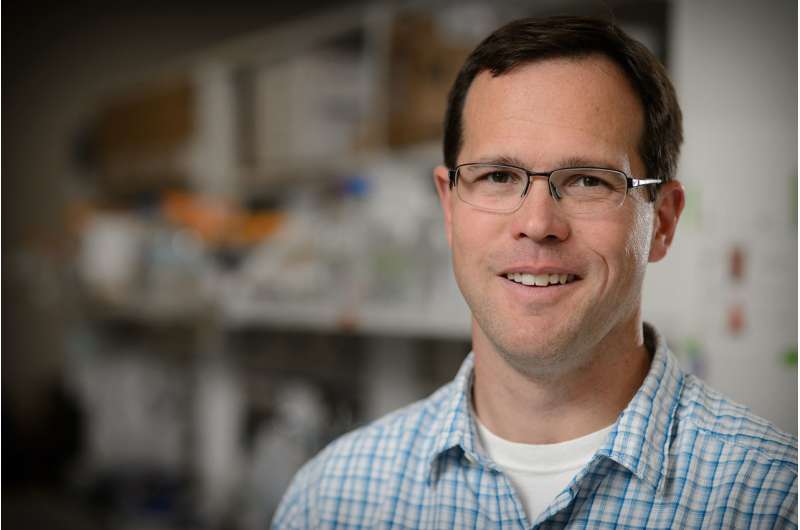Eran Andrechek is a physiology professor in the College of Human Medicine at Michigan State University who studies the genetic makeup of cancer. Credit: G.L. Kohuth
A new Michigan State University study is helping to answer a pressing question among scientists of just how close mice are to people when it comes to researching cancer.
The findings, now published in PLOS Genetics, reveal how mice can actually mimic human breast cancer tissue and its genes, even more so than previously thought, as well as other cancers including lung, oral and esophagus.
According to the Centers for Disease Control, cancer is the second leading cause of death among Americans next to heart disease.
"Just like human breast cancer, there are many subtypes that can be found in mice," said Eran Andrechek, co-author and physiology professor whose work focuses on the genetic makeup of cancer. "Our work outlines the genetic similarities of the tissue and cells in different types of tumors and shows the strong relationships mice can have to other human cancers too."
Different tumor subtypes can include glandular, which include the mammary glands, as well as squamous, which are very rare and involve epithelial cells that line the inside of the breast.
Andrechek's federally funded study looked at mice containing all subtypes and compared the makeup of the rodent tumors and the way the genes acted, known as gene expression, to human tumor data.
He found that not only did the genes act the same in certain breast cancers but the gene similarities were active in other cancers as well.
"Groups of genes were also being expressed similarly in the lung, oral and esophageal tumors," Andrechek said. "For example, mouse mammary tumors shared a signaling pathway that is found in human lung cancer and controls how cells reproduce and move from one location to another."
Because tumors have distinct genes, the way they act or send signals can help scientists identify and define the specific kind of cancer they're dealing with in hopes of finding the right treatment.
"Our work will help scientists understand in part what makes the various tumors so unique and such a challenge to treat," Andrechek said. "But even more importantly, for patients, our ability to identify the similarities could allow treatments for other cancers like lung to be used for certain breast cancers down the road."
Journal information: PLoS Genetics
Provided by Michigan State University






















